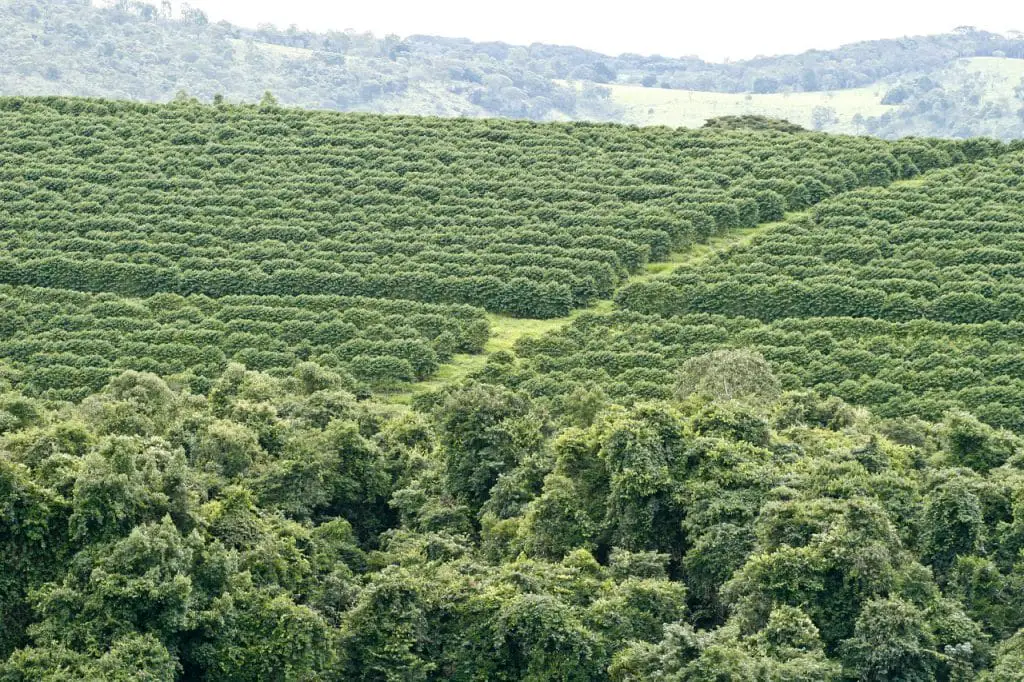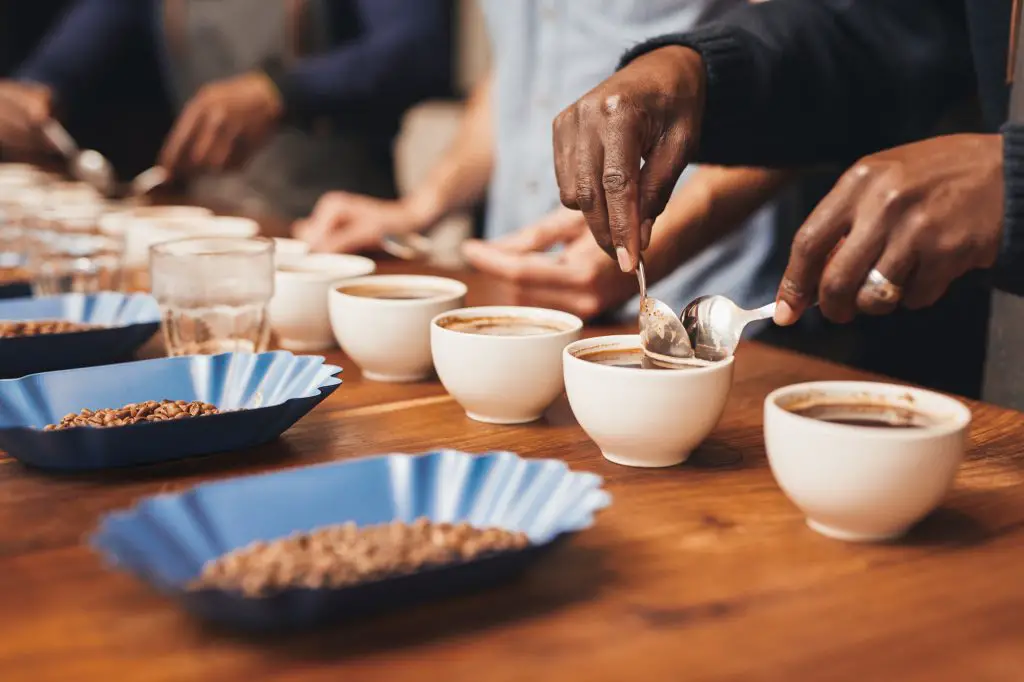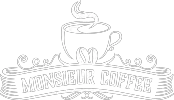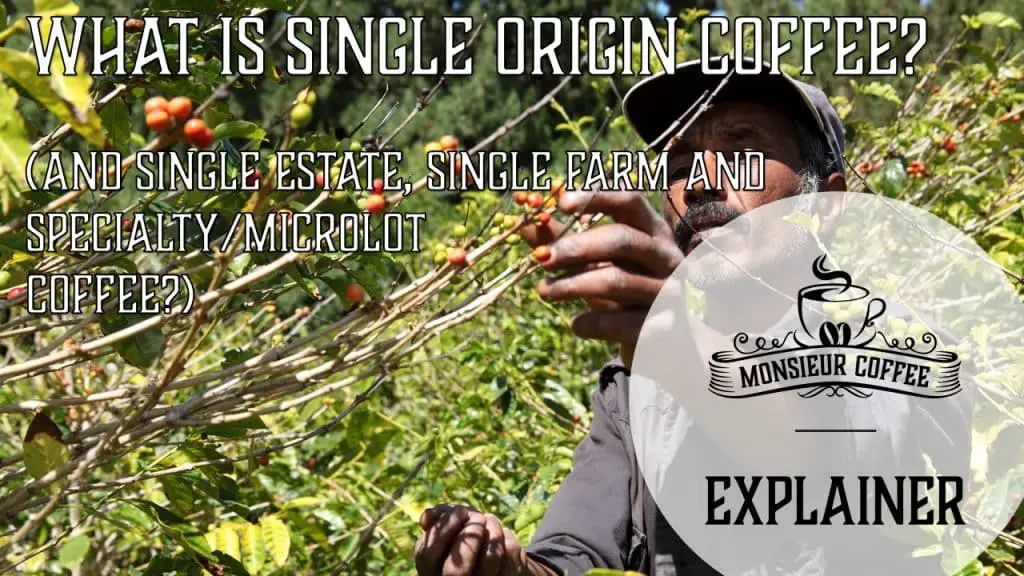I used to be quite confused about single origin, single estate, single farm, and specialty or micro-lot coffee. I see these words everywhere in coffee land. In my favorite coffee bars, at the coffee roaster where I buy my beans, and of course online. All four descriptions seemed to be used as a sign of good quality coffee. But, what do they mean? Are they really markers for good quality coffee? And, should I care? I decided to take a deep dive.
My conclusion: yes, I should care whether the coffee beans I buy are single-origin/estate/farm or specialty or micro-lot coffee beans. But, I shouldn’t take it at face value. I need to look a bit further.
But first things first. What does single origin, single estate, single farm, and specialty or micro-lot coffee mean?
the coffee trade
To answer that question, we start with the coffee roaster. A coffee roaster buys green (unroasted) coffee beans from a coffee trader. This trader (hopefully) knows where the coffee comes from. I.e., there is information on the ‘origins’ of the coffee. The origins of the coffee allow a roaster to determine from which country and region within that country the coffee comes, the name of the farmer, and the processing method. Especially the country and region, and the processing method are indicators of the flavor profile of the coffee beans.
As you might have guessed, the terms single-origin, single estate, and single farm have something to do with where the coffee comes from. A couple of years ago, before the ‘single’ hype, single-origin and similar terms were only used to differentiate a bag of beans from the coffee roasters house blend. Nowadays, these terms are much more related to good quality coffee.

OK, now let’s get into the specifics:
what is single origin coffee?
Single-origin coffee is coffee from a single producer, a single crop, or a single region within one country. This can be as general or specific as you want. Single-origin coffee beans can be Ethiopian coffee beans from multiple farms in the Yirgacheffe region. But single-origin coffee beans can also be from the Finca el Durazno plantation in the San Pedro Pinula region in Guatemala.
Single-origin usually means good quality coffee these days. But look a bit further. If a bag of beans states’ single origin’, check if there is more information available. Is it from one country and/or region, or is it specific to a particular plantation?
what is single estate coffee?
Single Estate coffee is a more specific description of the origins of the coffee beans, compared to single-origin. Single Estate coffee beans must come from one country and region, and they must be from one producer. So, the Ethiopian coffee beans from the Yirgacheffe are single-origin, but not single-estate. The coffee beans from the Finca el Durazno plantation in the San Pedro Pinula region in Guatemala are single estate because we can trace them back to one producer.
What is single farm coffee?
In most cases, single farm coffee is the same as a single estate coffee. But, ‘single farm’ may have an even more specific meaning. For example, the beans from the Finca el Durazno plantation in the San Pedro Pinula region in Guatemala are not from a single farm. This producer has multiple farms in the area. The differences between these farms are very minor, but they can have an effect on the flavor profile of the bean. If the flavor profile of the coffee beans from a single farm is considered to be better or more special, the producer might choose to label the harvest from that farm as single farm coffee beans.
what is specialty coffee or microlot coffee?
The most specific of all coffee bean labels is the specialty or micro-lot label. Personally, I prefer to use the term micro-lot because specialty coffee is also used in relation to the third wave of coffee (i.e., barista-style, well-made coffee using a variety of methods). Micro-lot coffee beans are usually from a single farm and sometimes even from a specific part of the farm. It is also possible that micro-lot coffee beans are the best coffee beans from the harvest of a small estate or cooperative. All micro-lot coffee beans have in common that their supply is limited. In most cases, no more than 100 bags (of 130-155 lb or 60-70 kg).
A part of the harvest is labeled as micro-lot when the cupping score of the lot is extremely high (a score of more than 85 points out of 100). The higher price that can be asked for these exceptionally good coffee beans makes it worthwhile to keep these beans separate.
what is cupping?
Cupping is the process of roasting and tasting a small quantity of green beans. Through cupping, a professional coffee taster determines the flavor profile (taste and aromas) of the coffee beans. The coffee beans are assessed at least 3 times. That is: immediately after the harvest, before the beans ship to their final destination, and upon arrival at the roaster.

Each type of coffee receives a cupping score based on the cupping. This score runs from 0-100. The final score is a sum of 10 components on which the coffee is assessed. This way, coffee gets a grade for taste, aftertaste, body, acidity, sweetness, balance, and aroma. Professional cuppers can use the flavor profile to tell precisely which region the beans come from. A coffee with a cupping score of at least 75 to 80 is referred to as specialty coffee. Single-origin, single estate, and single farm coffees usually score within the specialty coffee range.
but what does it all MEAN?
Now that we have established what single-origin, estate, farm, and micro-lot coffee beans are, we still need to figure out what these terms MEAN? Why should you care where the coffee comes from? Where it comes from doesn’t guarantee it’s quality, right?
Well, mostly. Although knowing where coffee beans come from (down to the farmer who picked them if you like) doesn’t guarantee that the coffee is of high quality, it does give some pointers. The best coffee is usually grown at higher altitudes (higher than 5000 feet or 1500 meters), and knowing the origin (location of the plantation) often provides you with this information. But even if you don’t want to do additional research, looking at the label give you a good sign of quality.
Coffee beans of lesser quality are usually blends. Mind you, I don’t mean that blends are of lower quality than single-origin coffee beans! Many artisanal coffee roasters blend together high-quality coffee beans to create a unique flavor profile. But, big coffee manufacturers also combine different varieties of coffee to get a cost-effective, but in my opinion, mediocre coffee bean blend.
So, when you shop at a small coffee roaster or a good coffee shop, and they have single-origin, single estate, single farm or even micro-lot coffee beans on offer, chances are you have some very good coffee on hands. Look for coffee that is roasted as freshly as possible. Coffee should have been roasted less than two weeks before you buy it. But the fresher, the better. My go-to coffee roaster roasts the same day I order my coffee.
conclusion
I hope you now have a better idea what the labels on your coffee beans mean. Being an informed consumer is good. Buying the best coffee beans you can (and can afford), is one of the steps towards making great coffee at home.
Let the java flow!
Caffeinated greetings,
Monsieur Coffee.

